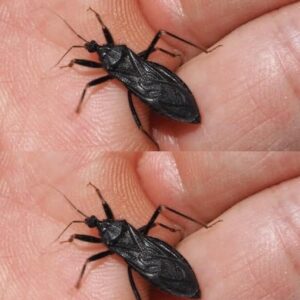The Atlas moth is not a typical moth in appearance. Its uniqueness lies not only in its impressive wingspan of 9.4 inches but also in its remarkable ability to camouflage itself as one of nature’s most formidable predators, the snakes.
These moths are endemic to the forests of Asia and were first described by Carl Linnaeus in his 1758 10th edition of Systema Naturae.
The distinctive wing pattern sets them apart. The upper surface of the wings displays a reddish-brown hue adorned with patches of black, white, pink, and purple lines, while the tips of both forewings feature notable extensions that resemble a snake’s head.

The atlas moth captivates all who encounter it, owing to its stunning appearance, intricate wing patterns, and impressive dimensions throughout its life cycle, asserts Luke Brown, the manager of the Museum’s butterfly house. The more we discover about this remarkable species, the more we find ourselves in agreement with his observation.
The atlas moth, even in its caterpillar stage, exhibits remarkable characteristics. The larvae engage in continuous feeding to accumulate resources for their pupal and adult phases. Concurrently, they generate silk akin to that produced by cultivated silkworms.
The caterpillar of the atlas moth consumes a significant amount of food if not restricted. Initially, it feeds on its own eggshell and subsequently prefers the leaves of citrus, guava, cinnamon, and Jamaican cherry trees.

Several species of these moths are maintained in controlled environments, such as butterfly conservatories, where they are provided with designated feeding zones. “We do not allow them to wander freely within the exhibition due to their high consumption rates. This practice enables them to accumulate fat reserves necessary for their adult life. Without careful oversight of their feeding habits, we would deplete the plant life in the butterfly house, which is why we confine them to specific feeding areas during their growth phase,” stated Brown, according to the Natural History Museum.
The Atlas moth, by mimicking the appearance of a snake, instills a sense of fear in various animals and insects. This form of camouflage serves to deter potential attackers, allowing the moth to avoid predation. Although predators may eventually recognize that the moth is not a snake, they are often afforded the opportunity to escape unharmed.
The unique patterns observed in these moths can be attributed to the remarkable processes of evolution and natural selection. Throughout the years, moths exhibiting snake-like patterns enjoyed a greater likelihood of survival, thereby transmitting those advantageous genes to subsequent generations.
Not only predators, but humans as well can be easily fooled by these moths’ appearance.

The existence of these insects is jeopardized by habitat loss and deforestation; however, numerous conservation initiatives are crucial for their survival and the preservation of their unique adaptations.
What do you think of these moths? Aren’t they stunning?
Please SHARE this article with your family and friends on Facebook.





